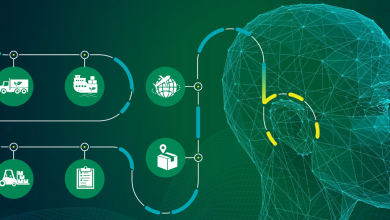
Test automation, the process of automatically reviewing and validating software products is one of the latest developments to hit the IoT world. Today, automation tends to be facilitated by AI tools such as GitHub and Copilot and the industry shows no signs of slowing down.
The recent integration of test automation into the software development process offers a mix of advantages and disadvantages that I believe organizations must consider carefully. When it comes to the pros, have no doubt, it significantly accelerates the testing process, enabling rapid feedback on code quality and functionality.
This quick turnaround is crucial for identifying and addressing defects early in the development cycle, leading to improved product quality and reduced time to market. Automation also allows for more extensive and consistent testing coverage than manual testing, making it easier to maintain high standards across large and complex projects. Another plus is that automated tests can be repeatedly run at no extra cost, something particularly beneficial for regression testing.
Whilst test automation offers clear benefits in terms of efficiency and coverage, its successful implementation requires careful planning, ongoing investment in maintenance, and a balanced approach that complements, rather than replaces, manual testing efforts.
There are many things that organizations remain unaware of when it comes to the software testing industry as a whole.
Significant technical debts are linked to inadequate test automation
The first is that, believe it or not, the most significant technical debt in over half of organizations is linked to inadequate test automation, indicating a pervasive challenge in maintaining software quality. In addition, rapid feedback on developer work, reducing response time from days to a few hours can enhance a development organization’s performance by about fifty percent, by cutting down issue classification time and minimizing context switches for engineers.
Importance of cross-browser testing decreases
Another thing you might not have known is that the importance of cross-browser testing is declining as browsers become more compatible with various Web UI frameworks, making browser-specific bugs increasingly uncommon. I believe the primary challenge in test automation is not the creation of them, but the analysis of test failures and the maintenance of test suites, highlighting the extensive effort required beyond just writing tests.
In the era of digital transformation, I believe British software testers face significant challenges that whilst mirroring global trends, are compounded by the unique landscape of the UK’s rapidly evolving tech industry. One of the most significant challenges is adapting to the accelerated pace of software development, spurred by the adoption of tools like GitHub Copilot, which, while increasing productivity, often does not improve, and may even decrease the quality of code. From experience, this in turn can exacerbate the already daunting backlog of testing and test automation, a critical issue given that the largest technical debt in organizations often stems from insufficient test automation.
Higher expertise is needed for AI-driven development
Furthermore, the shift towards more sophisticated testing paradigms, such as the use of testing bots and advanced frameworks like Playwright over Selenium, demands a higher level of expertise and adaptation. The need for quick, quality feedback loops is essential for maintaining development velocity, yet the analysis of test failures and maintenance of test scripts consume a significant portion of resources.
Moreover, navigating the complexities of the UK market, with its stringent regulatory requirements and the expectation for high-quality digital experiences, places additional pressure on testers to ensure that software not only meets functional requirements but also complies with legal standards and exceeds consumer expectations. These factors create a challenging environment for British software testers, who must continually evolve their skills and methodologies to keep pace with the demands of digital transformation.
A battle for balance between work and AI
As the demand for IoT solutions grows, the balance between work and AI becomes increasingly crucial for companies. I believe automation is accelerating the pace of coding, enabling teams to produce more code than ever before. However, this rise in quantity does not inherently lead to an improvement in code quality, underscoring the importance of integrating robust testing and test automation into the development process. With the largest technical debts in organizations centering around inadequate testing and test automation, it’s evident that embracing automation is not just about enhancing productivity but also about ensuring reliability and quality in what has become a fast-evolving IoT landscape.
Testing bot development
Last but not least it would be a crime not to mention testing bots. These are sophisticated tools designed to automate the process of software testing, making it more efficient and effective. They operate in a multi-step process that begins with the acquisition of new feature definitions, as outlined by product managers. These bots employ AI to suggest multiple test ideas, streamlining the initial phase of test planning.
Once these test ideas are approved, the bots proceed to generate structured test definitions using languages such as Gherkin or Cucumber, which are conducive to behavior-driven development (BDD). The next stage involves executing these tests on the user interface, and simulating user interactions to verify the functionality and performance of the software. Finally, testing bots complete the cycle by writing the necessary code to enable these tests to run autonomously, without further AI intervention.





